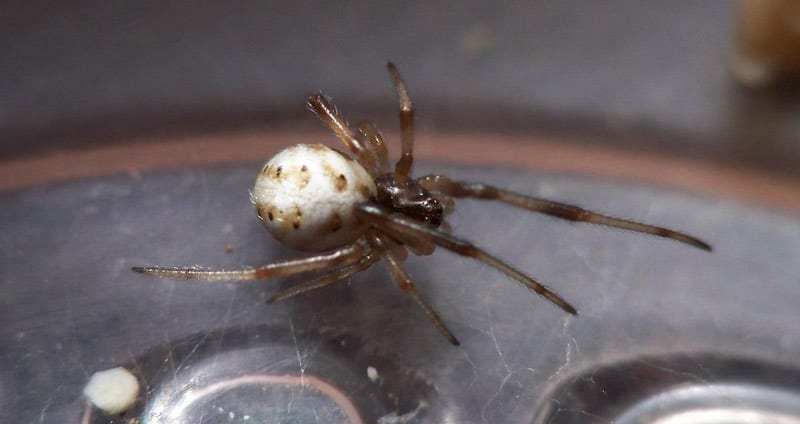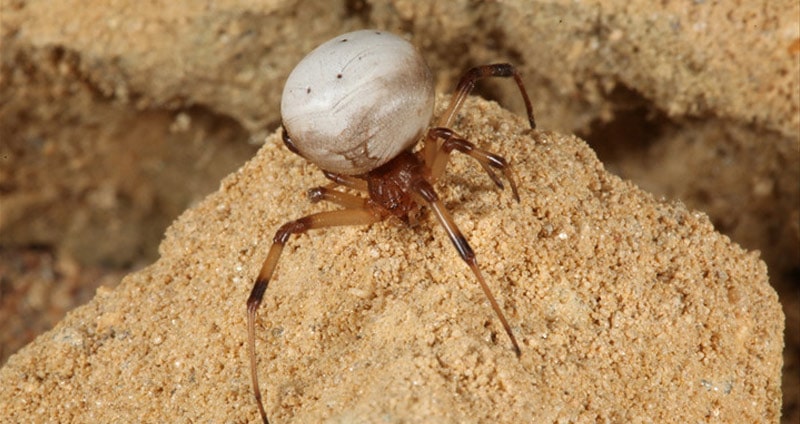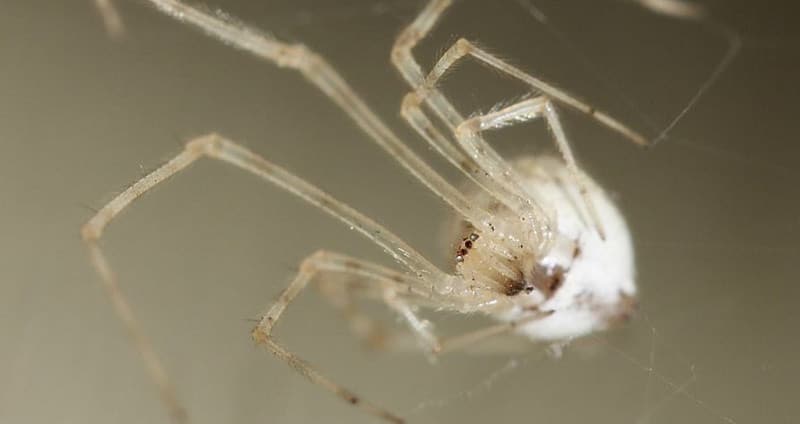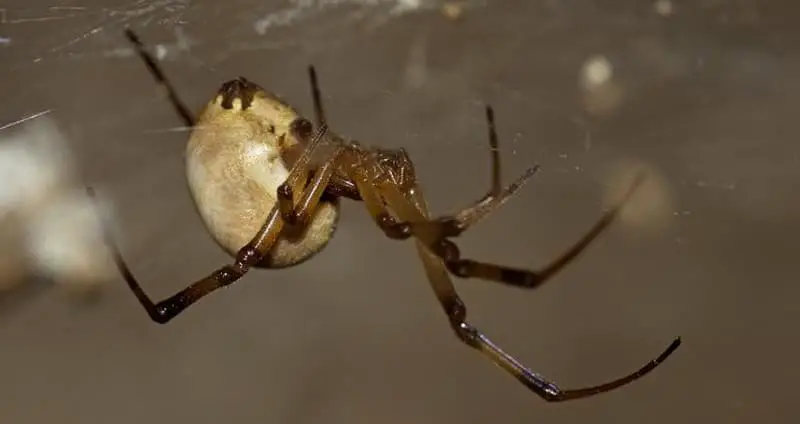The White Widow Spider, or Latrodectus pallidus, is a very unique member of the Latrodectus genus which is comprised of widow spiders.
It differs from other members of the genus through its unique coloration, smaller size, and less harmful bite.
This spider is not very common, but its relation to the famous Black Widow Spider has caused quite a few people to be interested about it and look into acquiring one.
Table of Contents
At A Glance
| Scientific Name | Latrodectus pallidus |
| Distribution | Southwest Asia, Russia, and the Middle East |
| Habitat | Deserts and grasslands |
| Size | 1/2″ to 1″ |
| Bite | Painful and sometimes threatening |
| Lifespan | 1-2 years |
White Widow Spider Appearance
This species of spider is likely native to Eurasia but was introduced to the United States several hundred years ago. Now, this spider is found in virtually all 50 states in addition to Europe, Russia, and New Zealand.
The carapace and legs of this species are light brown with a hint of yellow, but they can sometimes be more lightly-colored. Their legs have dark brown markings around all joints and at the tips.
As for the abdomen, it’s very bulbous and near pure-white. The patterns on the abdomen vary, ranging from a few tiny brown dots to multiple dots with surrounding light brown coloring.
Aside from the unique coloration, the actual physical characteristics of the White Widow Spider are very similar to most other species within the genus.

White Widow Spider Habitat
This spider lives in areas where the populations of many other spiders are much higher. Thus, this is considered a decently rare species that many people don’t get the possibility to observe or keep for themselves.
The White Widow Spider is primarily found in the steppes of Russia, Kazakhstan, and assorted Southwest Asian countries. Specifically, they make their home in flat grasslands with trees only by rivers.
They’re also present in the desert regions of the Middle East, showing that this is an adaptable spider that’s able to withstand a variety of different environmental conditions.
In the wild, these spiders build webs in low traffic areas with the hope of catching a passing insect, and they do this surprisingly well.
In fact, they’re known to construct fairly complex webs that act as snares. Because of the effectiveness of this trap, they don’t often roam around unless looking for a mate.

White Widow Spider Bite & Venom
While this spider does share a genus with the dreaded Black Widow, its bite is way less significant. A White Widow spider does contain venom and is considered “medically significant”, but it’s frequently doesn’t have many effects beyond being very painful.
However, this bite can be more harmful if its inflicted on someone that’s either allergic to it or they’re sick/young. Healthy adults shouldn’t have much to fear besides the pain.
If you come across one of these spiders, leave it alone. They will very rarely be found in an area with significant human traffic, so it’s best to leave them to their own devices.

White Widow Spider Eggs & Mating
This is a species of spider in which the males exert a lot of effort just to successfully mate a single time. Once a male matures, they spend most of their time searching for a female to mate with — and a lot of the time they’re unsuccessful!
In fact, in a study carried out in 2006, it was found that just 20% of males successfully mated with a female. On the other end of the spectrum, many females were found to have mated with several males.
That’s not the worst of it for male White Widows, though. Once they’re done mating, males frequently lose the tip of their copulatory organs inside of the female. On some occasions, females kill and eat the smaller males.
Once a a female mates, they lay their egg sac and guard it by themselves.
Random White Widow Spider Facts
- It’s rare to find males living in webs once they reach maturity, as they’re constantly on the hunt for a mate.
- Since mating competition is so high, aggressive males come out on top, causing males to become more aggressive over time.
- Around humans, this spider is reported to be shy.


I killed one of these today in my carport near the garage door. It had made a random web on a cot frame I was in the process of repairing. It had sat there several months before I could get to it and noticed the spider and web once my final repairs were nearly complete. I have had problems in my garage with Black Widows multiple times and find the males annually and have eradicated them over and again. I was shocked and surprised to see a white one and assumed it was some kind of recessive genetic derivation. I gave it a thorough inspection before killing it because I have found ones in the woods with many different deviations of the hourglass and multiple hourglass markings. I thought it might have an hourglass somewhere but there were no markings whatsoever and even the legs were pure white just like the rest of it. I am located in western Louisiana only fifteen miles from the Texas border. My search for “White Widow spider” led me here. I have also spotted very large (2 to 3 inches across with an abdomen the size of a grape) ground spiders that are completely white in my back field against deep woods. They have a white powdery appearance like a white powdered sugar doughnut.
this year I have a lot these spiders on the siding of my home. First I thought it was white widow but then I find out it was white crap spider. White widow and white cop spider R very similar